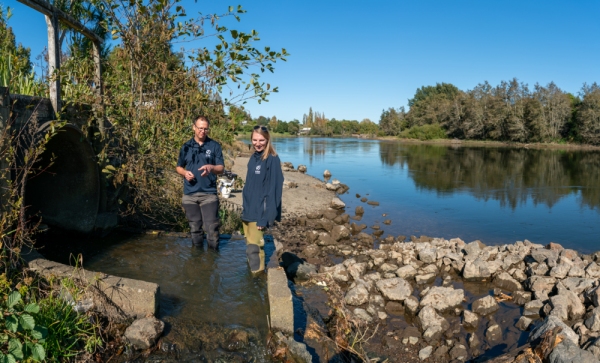Nearly half of New Zealand's river network is partially or fully inaccessible to migratory fish, a new study shows.
NIWA has conducted the first nationwide assessment of river fragmentation, looking for structures that can act as barriers to fish. These structures are often human-made and include dams, culverts, and weirs.
Researchers found that New Zealand has some of the highest densities of barriers to fish passage in the world, with approximately 0.16 barriers/km. At least 48% of the river network is partially inaccessible to migratory fish, and a further 36% could be restricted, but is yet to be assessed for risk to fish passage.
NIWA Freshwater Ecologist Paul Franklin said that fragmentation of river systems is a key driver of freshwater biodiversity loss.
"There are just over 50 native New Zealand fish species, with around 85% of those not existing anywhere else in the world. Many of our iconic fishes, such as eels and the whitebait species, migrate between the sea and our rivers to complete their life cycle."
"However, they often encounter different structures along the way that act as a barrier, stopping them reaching key habitats. This ultimately leads to lower abundances and potentially loss of these species," said Franklin.
To address this challenge, NIWA is studying the swimming abilities of fish and coming up with solutions to help them migrate.
"We put fish into the equivalent of a water treadmill to see what speed they can maintain under various flow conditions – we want fish to be able to move upstream casually, not having to fight the whole way. We can then assess what adjustments need to be made to structures in our river networks to help fish pass through these environments more easily," said Franklin.
Culverts, for example, are put in streams and rivers to help people cross safely, while allowing an adequate passage of water. However, they can alter the flow of the stream or river, and therefore the ability of fish to swim through them.
"The good news is that many of the solutions are extremely easy to implement.
"You can install baffles into culverts, which are basically panels placed inside the tube that help to slow water down and create resting areas, so that fish can pass through into the stream above," said Franklin.
"Small changes like this can make a big difference. If we don't start reducing the threats that we've placed into their environment, these precious fish will one day be gone."


